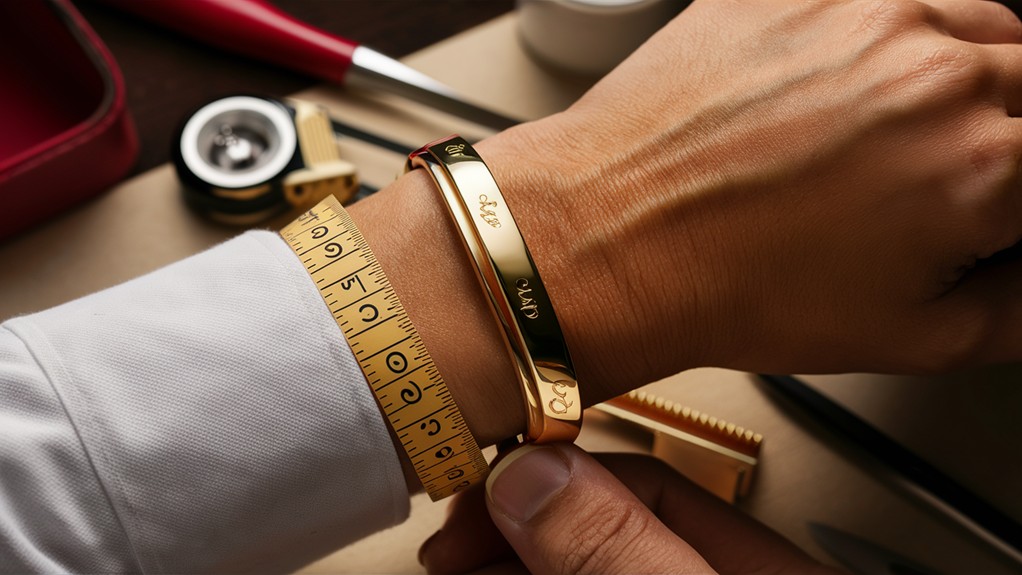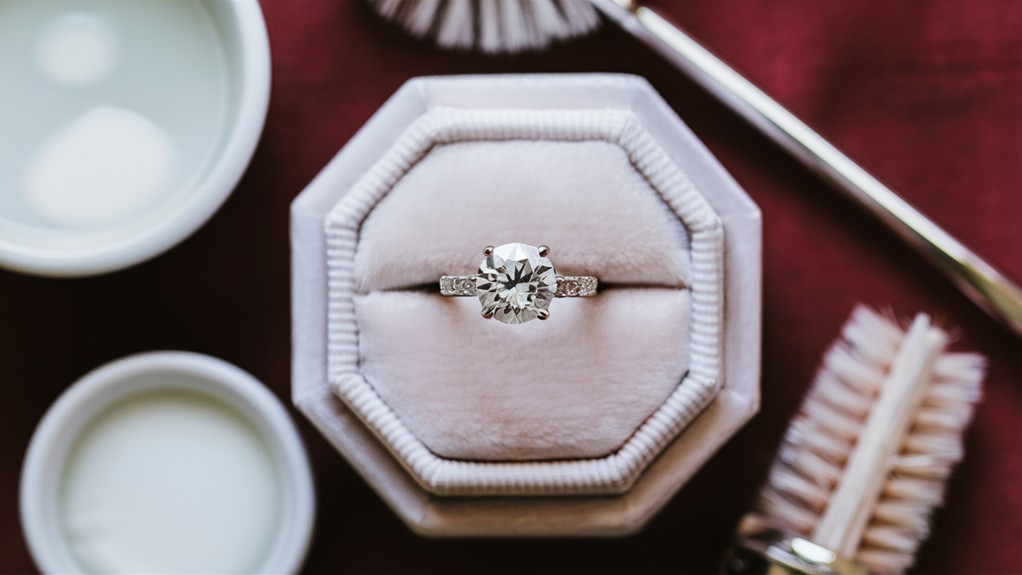Do you ever wonder if gold is durable? Well, the answer is that it can be, depending on the karat.
Pure gold is soft and easily bent, but when it's alloyed with other metals, it becomes more durable. The most common karats used in jewelry, like 14 and 18 karat gold, are more durable than higher karats.
Even lower karat gold, like 10 karat, is highly resistant to scratches, scuffs, and dents, making it perfect for everyday wear. In addition, its affordability makes it a popular choice for those on a budget. Many people choose 10 karat gold for their everyday jewelry, such as rings, necklaces, and bracelets, because of its durability and low cost. However, even with its resistance to damage, it’s always a good idea to take care of your jewelry to maintain its appearance. For instance, using grandma’s gold ring scratch remover can help keep your 10 karat gold jewelry looking new for years to come.
So, while gold may not be indestructible, it's definitely a durable metal that can withstand the test of time when properly cared for.
Our Highlighted Points
- Different gold karats have varying levels of durability, with 10 karat gold being highly durable and resistant to damage.
- The durability of gold can be impacted by factors such as the karat level, the type of jewelry, and the alloy composition.
- White gold is a durable option for jewelry, while rose gold and yellow gold are slightly less durable but still good choices.
- To care for gold jewelry, it is important to clean it regularly, store it properly, avoid exposure to damaging chemicals, handle it delicately, and schedule regular maintenance with a jeweler.
Physical Properties of Gold
Gold's physical properties, such as its density and malleability, make it a versatile and durable metal. However, pure gold is too soft to be used in its natural state for jewelry or other durable items.
To increase its durability, gold is often alloyed with other metals. The karat system measures the amount of pure gold in a piece of jewelry, with 24 karat gold being the purest and 10 karat gold being the least pure. When purchasing gold jewelry, it's important to consider the karat, as higher karats have a higher amount of pure gold and are more prone to scratching and bending.
For items that require more durability, such as wristwatches, it's best to use 18 or 14 karat gold. However, 10 karat gold is the least pure but hardest and most durable type of gold, making it popular for everyday jewelry such as charm bracelets, earrings, and necklaces.
Factors Impacting Gold's Durability
To understand the durability of gold, you need to consider various factors that can impact its ability to withstand wear and tear. Here are three key factors that can impact the durability of gold:
- Karat level: The karat level of gold determines its softness and resistance to damage. Higher karats, such as 22 or 24 karat gold, are softer and more prone to scratches and wear. On the other hand, lower karats, like 10 karat gold, are more durable and suitable for everyday wear.
- Type of jewelry: Different types of jewelry have different requirements for durability. For example, necklaces and bracelets are more likely to come into contact with hard surfaces and require a higher level of durability. Wristwatches, on the other hand, may require a balance between durability and style.
- Alloy composition: Gold is often mixed with other metals to enhance its durability. However, the choice of alloy can impact its overall durability. Some alloys may make the gold more resistant to scratches and wear, while others may make it more brittle or malleable.
Considering these factors will help you choose the most durable gold jewelry that suits your needs and lifestyle.
Durability of Different Gold Karats
When considering the durability of gold, it is important to examine the various karat levels and how they impact the longevity of the jewelry. The durability of gold karats can vary significantly, with some being more resistant to damage and wear than others. Here is a table that provides a comparison of the durability of different gold karats:
| Gold Karat | Durability |
|---|---|
| 10k | Highly durable, resistant to scratches, scuffs, and dents. Suitable for daily wear. Popular for charm bracelets, earrings, and necklaces. |
| 14k | Durable enough to hold diamonds and larger gemstones. Offers a good balance of affordability, durability, and value for money. |
| 18k | Softer and less durable than lower karats. More vulnerable to damage and not suitable for frequent wear and tear. |
| 24k | Softest and most prone to scratching. Less durable and more likely to bend or have clasp issues. |
When choosing gold jewelry, it is important to consider the durability of the karat in the context of your needs and preferences. While higher karats may offer a richer color, they may also be more susceptible to damage. Ultimately, the most durable gold karat for you will depend on your lifestyle and how you plan to wear the jewelry.
Comparison of Gold Types for Jewelry
You should compare the durability of different types of gold used in jewelry. When it comes to gold types, there are a few options to consider. Here's a comparison to help you make an informed decision:
- White Gold: This gold type is durable and resistant to scratches. It's a popular choice for engagement rings and wedding bands due to its elegant and timeless look.
- Rose Gold: While not as durable as white gold, rose gold is still a good option for jewelry. It has a unique and romantic appearance, making it a popular choice for engagement rings and other special pieces.
- Yellow Gold: This classic gold type is known for its high purity. While it may be slightly less durable than white or rose gold, it's still a great choice for everyday jewelry such as necklaces and bracelets.
Tips for Caring for Gold Jewelry
Take proper care of your gold jewelry to ensure its longevity and shine. Here are some tips to help you care for your precious pieces:
| Tip | Description |
|---|---|
| Clean regularly | Use a soft cloth or brush to gently clean your gold jewelry. Avoid using abrasive materials that could scratch the surface. |
| Store properly | Keep your gold jewelry in a separate compartment or pouch to prevent scratching and tangling with other pieces. |
| Avoid chemicals | Remove your gold jewelry before swimming in chlorinated pools or using cleaning products. Chemicals can damage the metal and gemstones. |
| Handle with care | When wearing or removing your gold jewelry, handle it delicately to avoid bending or breaking. |
| Professional maintenance | Schedule regular check-ups with a trusted jeweler to inspect and professionally clean your gold jewelry. |
Conclusion
Imagine you're a piece of gold jewelry, shining and strong. Your durability depends on the karat, but even the lower ones like 10 karat gold can withstand everyday wear. You may be alloyed with other metals, but you still retain your beauty and strength. With proper care, you can withstand the test of time.
Just like gold, we too can overcome challenges and remain resilient. Let's cherish our durability and embrace the power within us.


